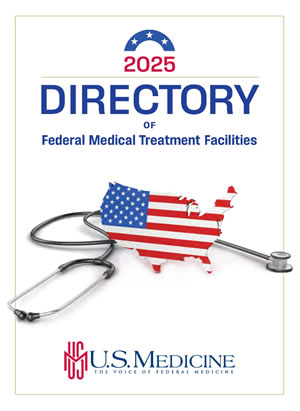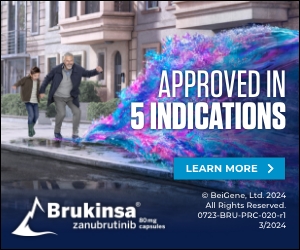BETHESDA, MD–More than a dozen military treatment facility pharmacies have implemented a pilot customer service system that gives patients greater control over how they spend their time while waiting for prescriptions to be filled.
The Defense Health Agency began the rollout of the Q-Flow electronic queuing system in December 2017 in response to a requirement in the FY17 National Defense Act Authorization to display wait times at military urgent care clinics and pharmacies. The pilot will run through the end of 2019.
The “bank teller” system used in many MTF pharmacies requires patients to stand in line to present a prescription and have it filled in a single interaction. At Barksdale Air Force Base, Bossier Parish, LA, the wait could take up to two hours during peak times, according to Maj. John Wu, 2nd Medical Group pharmacy flight commander.
With the new system, patients check in at an electronic kiosk and provide basic information about themselves and their prescription or other needs. When done, they receive a ticket that indicates their place in line within their beneficiary category. They then wait briefly to be called up to a window.
A pharmacy technician reviews the prescription and checks whether the medication is in stock and on formulary. The initial wait is usually just a matter of minutes, according to Edward Norton, MSC, acting chief of DHA’s Integrated Utilization Branch, Pharmacy Operations Division in Bethesda, MD.
The real advantage of the pilot program comes at the next step. Patients can see on an overhead display how long it will take to fill their prescriptions. They can then choose to wait in the pharmacy until their prescription is ready, or they can grab a cup of coffee, return to work or run errands while they wait.
The pharmacy sends a text message when the prescription is ready for pickup, so patients know when to return. Then they have a brief wait to get their order and discuss the medications with the pharmacist, if necessary. A text message also goes to the patient, if a problem arises with filling the prescription.
“Previously, patients could wait for an hour, only to find that their prescription could not be filled,” Norton told U.S. Medicine. With the new system, any issues with the prescription are identified very quickly and communicated to the patient. While the total time needed to fill a prescription might not be any shorter, the system gives patients more flexibility and more information. “It’s more respectful of the patient’s time,” he noted.
The pilot sites include a range of pharmacy sizes, both within and outside the continental United States. and operated by various services. The Q-Flow system has been piloted in Fort Bliss, TX; Premier Community Based Medical Home near Fort Carson, CO; Landstuhl Regional Medical Center, Germany; Fort Irwin, CA; Schofield Barracks, HI; Navy Health Clinic Annapolis, MD Navy Medical Center Portsmouth, VA; Camp Lejeune, NC; Naval Hospital Pensacola, FL; Joint Base Elmendorf-Richardson, AK; Andrews Air Force Base, MD; Travis Air Force Base, CA; Fort Gordon, GA; and Barksdale Air Force Base, LA.
MTF pharmacies have significant latitude in the systems they can use, and a number of pharmacies had implemented the Q-Flow system prior to the pilot program’s start. Others had different queuing systems or none at all.
The diversity of approaches created the biggest challenges for the pilot program, according to Norton. At some facilities, the new system was quickly integrated into existing processes, while at others, the implementation was slowed by the need to upgrade multiple systems.
In addition to better meeting patient needs, the Q-Flow system provides a variety of reports that can help with staffing. While Norton noted that many pharmacies already had other systems in place to help with management, the reports have proved useful elsewhere in the in the facilities where Q-Flow has also been piloted.
In emergency departments using the Q-Flow system, patients check in at a kiosk, get a number and can see a display showing how long they will wait before being triaged by a nurse. Those requiring emergent are seen as soon as a bed is available, said Regina Julian, MHA, MBA, FACHE, chief, Patient-Centered Medical Home Primary Care, DHA. Those needing urgent or primary care can check a second display board to see how long their wait will be.
The reporting function allows staff to identify peak demand periods and determine what changes would best meet patient needs, Julian told U.S. Medicine. “If we see we have high demand on Tuesday afternoons, for instance, we can increase staffing in the clinic during those hours or, if many of those patients are not urgent cases but were just unable to get an appointment with a primary care provider, that tells us we need to increase the number of appointments available.”
The system also enables rerouting of patients to better provide prompt, quality care and control costs, she noted. “If we have high demand in the emergency department and see that we have appointments available in primary care, we can walk patients to a provider who already knows them and where they might be seen more quickly.”


